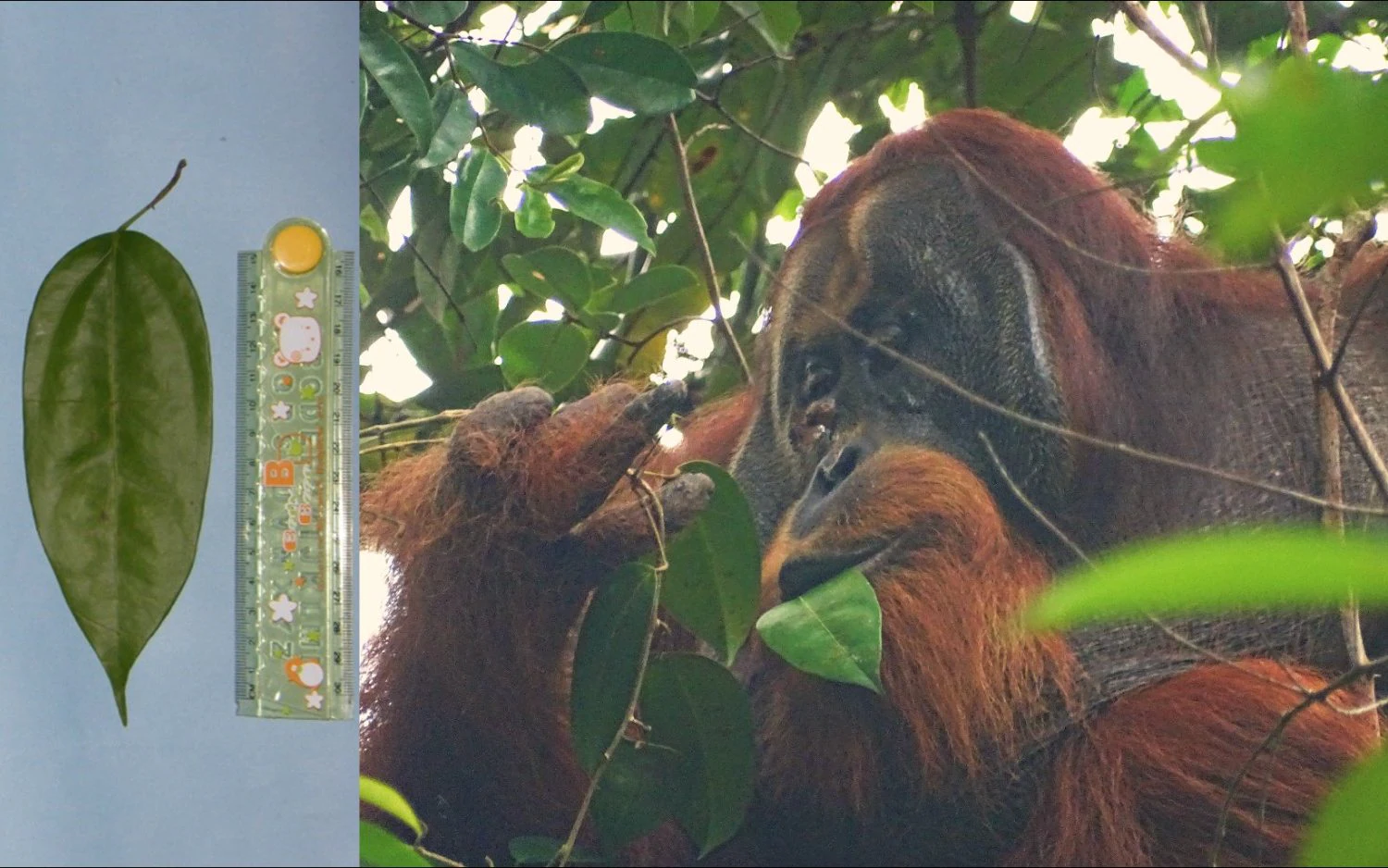Researchers have long recognized the impressive intelligence of orangutans, partly due to their adept use of tools for foraging and seed retrieval. However, recent research unveils another remarkable skill in their repertoire: the use of medicinal herbs.
A male Sumatran orangutan was observed treating an open facial wound with sap and chewed leaves from a plant known for its anti-inflammatory and pain-relieving properties. This discovery marks the first instance of a wild animal using a substance with medicinal qualities to treat wounds.
While it’s not uncommon for wild animals to self-medicate, such as Bornean orangutans using chewed leaves to soothe sore muscles or chimpanzees applying plants to treat worm infections, this finding is unique. The orangutan’s use of a plant with known medicinal properties offers intriguing insights into the origins of human wound care.
Dr. Caroline Schuppli, senior author of the research conducted at Max Planck Institute of Animal Behavior in Germany, suggests that the cognitive capacities required for such behavior likely existed in our last common ancestor. This indicates that the roots of human wound care extend far back in evolutionary history.
The discovery unfolded in a protected rainforest in Indonesia, where researchers observed a male Sumatran orangutan named Rakus. After sustaining a fresh facial wound, Rakus was seen feeding on the stem and leaves of a particular vine. Surprisingly, he began chewing the leaves and applying the plant juice directly onto his wound using his fingers.
Remarkably, Rakus repeated this behavior, ultimately covering the wound with the chewed leaves until it healed completely within a few weeks. The plant he used, Fibraurea tinctoria, is known for its antibacterial, anti-inflammatory, and pain-relieving properties, among others, and is used in traditional medicine for various ailments.
While it remains unclear whether Rakus learned this behavior from others or figured it out himself, the intentional use of the plant suggests a level of cognitive capacity. However, the extent of his understanding remains a mystery.
This groundbreaking discovery sheds light on the sophisticated abilities of orangutans and offers intriguing parallels to human wound care practices, dating back to ancient times.















































